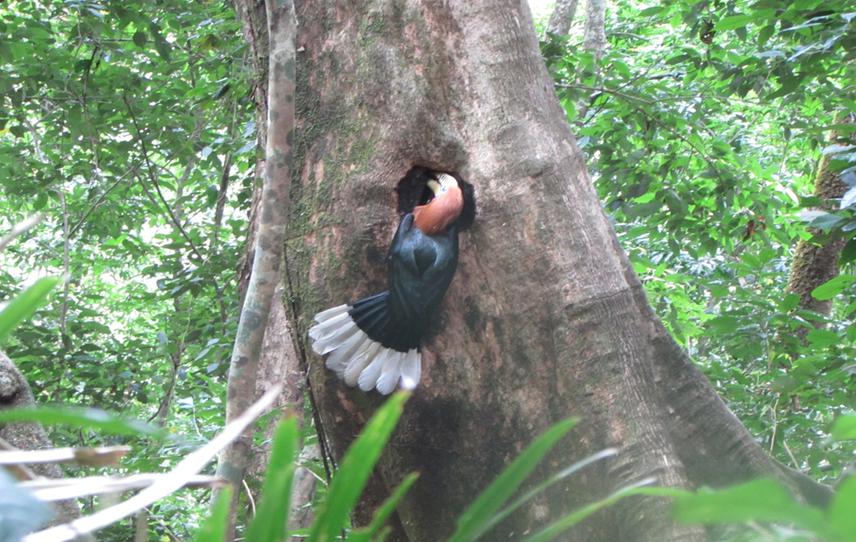Kinley
The project aims in documenting the distribution ecology, habitat use, breeding season, people’s perception and conservation threats of Aceros nipalensis.

Rufous-necked hornbill (Aceros nipalensis) is classified as vulnerable by the International Union for Conservation of Nature (IUCN) and Birdlife International. Proposed project area caters important habitat for Rufous-necked Hornbill but no study has been carried out to determine the distribution, ecology, conservation status and anthropogenic threats of the species in the study area. Breading season of the species will also be studied and this will be the first of its kind in Bhutan.
Transects will be laid along the existing cattle tracks, footpath, old logging roads and farm roads. Whenever the RNH are observed, a 10 m circular plot will be laid to measure the habitat components. The habitat components such as the structure on vegetation, species composition and threats will be assessed in the observation points. People’s perception will be gathered through social interview.
Therefore, my project will focus on above areas with the ultimate goal to ensure the survival of this vulnerable RNH in the country. The research results may help to develop conservation policies and guidelines focusing on the species.
Through this project I will be trying to advertise the need for Rufous-necked Hornbill conservation to rest of the conservationists, policy makers and public at large. This can be done by producing sound scientific documentations; informing the findings to the Department of Forest and Park Services and publications through peer reviewed national and international journals and creating awareness to the general public residing proximity to the Rufous necked Hornbill habitat.
Through this project, I hope that Rufous-necked Hornbill will gain its conservation importance and its conservation efforts may grow from local level to national level. I am optimist that my goals will be achieved through this project.